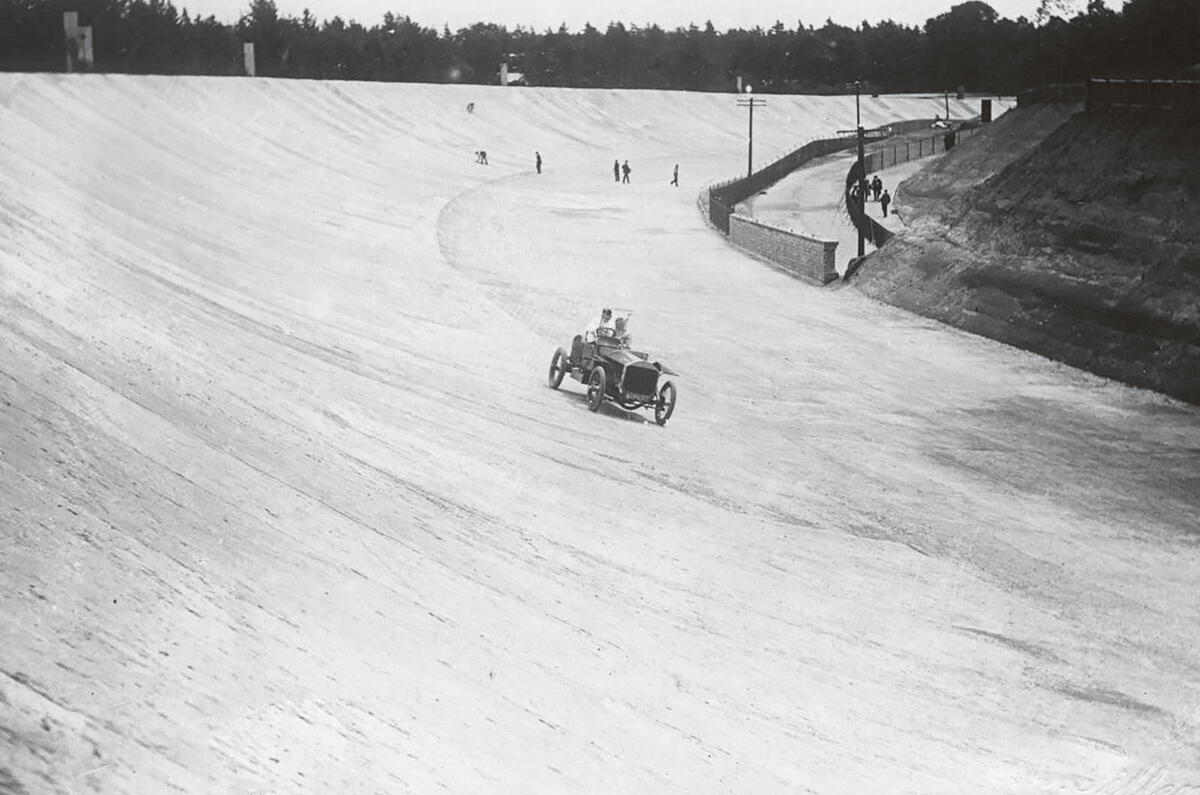Billed as the motor racing equivalent of an Ascot horse race, the first meeting at the then-new Brooklands circuit in Surrey took place on 6 July 1907.
It wasn’t the first action to which Hugh Locke King’s new track had played host. A week before that first race, Selwyn Edge had used the circuit to set a new 24-hour distance record of 1581 miles and 1310 yards. That took place in front of few onlookers, but for the first full meeting a crowd of about 13,500 gathered.
“The quietude of the fir-clad slopes at Weybridge was disturbed on Saturday by the roar and rattle of open exhausts,” wrote Autocar’s sister publication, The Motor. “Great cars, belching forth clouds of smoke and handled by greasy drivers, lined up for inspection and were surrounded by fashionably attired ladies and gentlemen.”
Six races of between 3.2 and 30.4 miles were run but “no times were recorded, and thus, in our opinion, the racing was robbed of much of its interest”.
The prestigious Montagu Cup event was won by JE Hutton’s Mercedes, but the fourth race, for the Byfleet Plate, was “the most exciting race of the day”, according to The Motor’s scribe.
“C Jarrott’s Lorraine-Dietrich went off in the lead and held it for the first round,” he wrote. “During the second circuit the Napier of F Newton got on terms, and the two cars ran bonnet to bonnet for some time.
“Then the Dietrich gained again and the two cars entered the last round locked together, the Dietrich seeming to be slightly ahead. Thus they entered the finish straight and the rare sight of a magnificent tussle right to the tape was witnessed, the Napier sprinting up level and the two cars going over the line together, the verdict being a dead heat.”
The Motor’s correspondent was surprised at what he saw but had some observations that he hoped would be of use to the Brooklands organisers.
“The new sport inaugurated on Saturday may, quite possibly, catch on. I was extremely interested in the racing and it made a better impression on me than I had anticipated.
“The meeting was a first effort, and it is safe to assume that, as the authorities settle down to their work, many improvements will be introduced. It would be idle to deny that the meeting did not reveal defects.
“The failing of Saturday was that the cars were not sufficiently distinctive. The numbering of the competing cars was a mere haphazard device, numbers being put on anyhow and anywhere. For purposes of identification on cars travelling at high speeds, the numbers were quite useless.




Add your comment